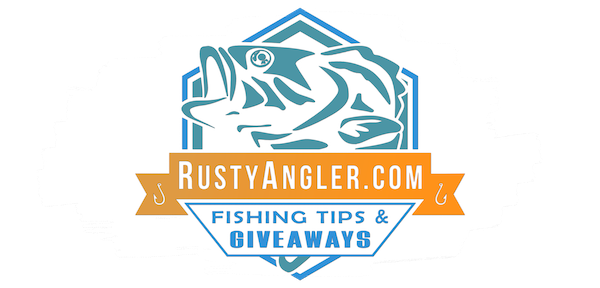Quality Crappie Lures
Fishing for Crappies – It’s better than you think
If you are unfamiliar with them, crappies are a type of panfish often caught during the summer. They are a member of the sunfish family. They are one of the best tasting fresh water fish and are fairly fun and easy to catch.
Add to this their smaller size, hence being a panfish, and the endless jokes that go with the name crappie, and these are ideal fish for kids to begin with when learning to fish.
Still, fishing for crappies isn’t all sunshine and unicorn farts. There are a few techniques and skills that are worth learning, and worth teaching, if you are going to make fishing for crappies part of your summer traditions.
Had a Crappie day – It was great!
First off, yes, I intend to make as many jokes as possible. Second, crappie hold a special place in many of our hearts as they were some of the first fish we caught. They were what got us interested in fishing to begin with.
Bait for crappies is pretty straightforward. They mostly feed on minnows. So, a hook with a live minnow is perfect crappie bait. Add a small weight and a bobber, find the right depth – about three to six feet – and you are good to go.
In addition, crappie baits are easy to find and catch, making them economical as well.
However, if you don’t have any live bait, or have run out, there are plenty of good crappie lures to use. Most crappie lures are exactly what you would expect them to be, lures that imitate the minnows crappie eat.
Look for small jigs, spinners and minnows, that you can switch out on your line. Crappie are fighters, so make sure you have a good spinner to avoid line breaks, and keep the line tight to avoid them shaking off the hook.
In the Southeast, back crappie are highly regarded freshwater fish for table fare. Fortunately, catching them is fairly simple as long as you know how. Often the hardest part is finding the fish. Once you do, set your line and go.
In most areas, live bait will always work best for catching black crappie. These tasty fish love eating smaller fish, so any small minnow is the perfect black crappie bait.
From the small Missouri Minnows sold in freshwater bait stores to larger mosquito fish caught in minnow traps, it’s hard to go wrong with these types of bait. You can even catch good baitfish just dip netting along the shore.
Fishing Crappie Tips – Keep it tight
Although crappie are small, they can put up a good fight. That’s part of what gets kids so excited fishing for them. However, crappies also have very fragile skin, which means it’s easy to tear the hook through them.
To avoid this, make sure your crappie lure or hooks are smaller, and make sure you keep the line tight throughout the whole battle. A slack line leads to them getting away, sometimes lure and all.
The best crappie rods, matched with a good reel, will almost always be an ultralight or light spinning combo. These have great versatility, a light touch for finesse, and a light weight line, all make this the weapon of choice for many crappie fishers.
Still, not all crappie poles are created equal. Shakespear makes a great crappie pole, and it’s one that won’t break the bank. The Shakespear Wonderpole is perfect for crappie.
This rod telescopes from just under four feet to a fully opened length of 16 feet. That makes it easy to store and carry, and the extra length means you can cast farther and have greater sensitivity. Additionally, the fiberglass construction gives the pole exceptional strength.
Now that you have most of your gear, the only thing left is a good crappie hook. As stated earlier, crappie are a smaller fish, therefore a smaller hook. However, crappies have much larger mouths than bluegills or pumpkinseeds.
For crappie fishing, a standard live bait hook size is a thin-wire size four for small minnows, and a size two for medium minnows. The thinner wire also helps to keep the hook in place for the crappie fight.
All times, all seasons
While crappies are mostly thought of as a summer fish, there is good fishing to be had with these feisty fish at night as well as during the winter. Ice fishing for crappies is popular in the northern part of the US and Canada.
Like all fish, local details will vary from lake to lake. However, when ice fishing for crappies, you can’t go wrong by targeting weed beds. Look for those crisp, green patches that pump out oxygen and fuel the food chain of insects and microorganisms.
To find those beds, think of shallow areas. They are more likely to have weeds. When you drill through the ice, pay attention to the color of the water as well. Clean water means there are weed beds filtering the area. Cloudy water means mud and murk.
Fishing at night for crappies is also a popular approach, especially when you don’t want to be out on the water during really hot summer days. The best night-fishing lakes are generally deep, fairly clear and cover at least 500 acres.
These lakes are fertile, have abundant baitfish, and have a good mix of cover with areas of open water right next to structural elements.
Price matters for priceless memories
For me, crappies are not only easier to catch, they are much softer on the wallet. I’ve fished for crappies with rod and reel, but also with cane pole or hand line.
You can grab an inexpensive rod, some low-test line, a few hooks, weights, and bobbers, and you are off to the dock. If you want to get fancy, and really deck out your tackle box, don’t be afraid to find the specials and deals around you.
Sites like the Rusty Angler have all sorts of fishing giveaways and fishing sweepstakes that can fill your needs without emptying your bank account.
In addition, many companies and groups have fishing promotions such as buy one get one free or, even better but rarer, buy one get two free. To me, any fishing giveaway is a good fishing giveaway.
Just remember, when all is said and done, the smiles and memories are what’s really valuable.

